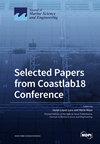海平面上升与通博洛斯的未来:希腊案例
IF 2.8
3区 地球科学
Q1 ENGINEERING, MARINE
引用次数: 0
摘要
蘑菇云是短暂的海岸地貌,可能在很短的地质时期内形成和消失。因此,它们很容易受到海洋过程的影响。然而,在过去的几十年里,气候变化和随之而来的海平面上升似乎影响了世界上大部分海岸线。墓碑林尤其容易受到即将到来的海平面上升的影响。未来几十年,全球许多墓碑可能会消失。我们的工作旨在量化希腊海岸线上的古墓群易受海平面上升影响的程度。我们绘制了希腊所有古墓群的地图,并创建了一个在线(公共)地理数据库。我们测量了每个古墓的主要地貌特征(如长度和宽度)以及海平面以上的高度。在此基础上,我们应用了 IPCC 提出的关于未来海平面上升的两种情景(RCP 2.6 和 RCP 8.5),以检验希腊古墓群在未来几十年内可能消失或面临极端侵蚀的程度。我们的研究结果表明,即使在乐观的情况下,100 年内也会有一半以上的希腊古墓群被完全淹没并消失。即使是那些保留下来的古墓群,也将面临严重的侵蚀问题。本文章由计算机程序翻译,如有差异,请以英文原文为准。
Sea Level Rise and the Future of Tombolos: The Case of Greece
Tombolos are ephemeral coastal landforms, which may form and disappear over short geological time periods. Thus, they are susceptible to marine processes. During the last decades, however, climate change and the subsequent sea level rise seems to have affected a large part of the world’s coastlines. Tombolos are particularly prone to the imminent sea level rise. Many tombolos globally may disappear in the coming decades. Our work aims to quantify the susceptibility of the tombolos along the Greek coastline in relationship to the sea level rise. We mapped all Greek tombolos and created an online (and public) geodata base. For each tombolo, we measured its primary physiographical characteristics (e.g., length and width), and also its height above sea level. Based on that, we applied two scenarios proposed by the IPCC concerning the future sea level rise (RCP 2.6 and RCP 8.5), in order to check to what extent the Greek tombolos may disappear or face extreme erosion in the next few decades. Our results indicate that more than half of the Greek tombolos will be fully flooded and disappear in 100 years even under the optimistic scenario. Even those that remain will still face severe erosion problems.
求助全文
通过发布文献求助,成功后即可免费获取论文全文。
去求助
来源期刊

Journal of Marine Science and Engineering
Engineering-Ocean Engineering
CiteScore
4.40
自引率
20.70%
发文量
1640
审稿时长
18.09 days
期刊介绍:
Journal of Marine Science and Engineering (JMSE; ISSN 2077-1312) is an international, peer-reviewed open access journal which provides an advanced forum for studies related to marine science and engineering. It publishes reviews, research papers and communications. Our aim is to encourage scientists to publish their experimental and theoretical results in as much detail as possible. There is no restriction on the length of the papers. The full experimental details must be provided so that the results can be reproduced. Electronic files and software regarding the full details of the calculation or experimental procedure, if unable to be published in a normal way, can be deposited as supplementary electronic material.
 求助内容:
求助内容: 应助结果提醒方式:
应助结果提醒方式:


